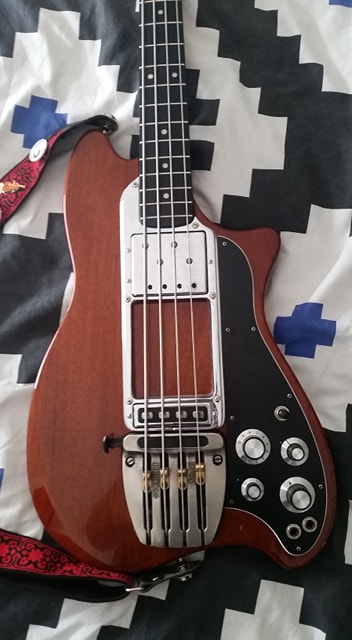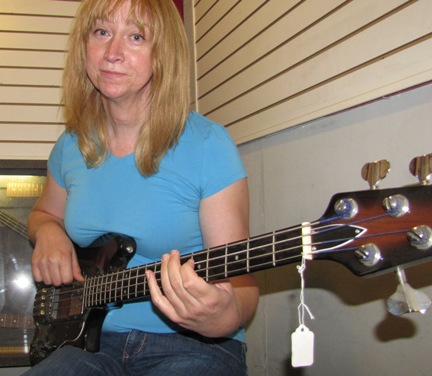

The first successful design, built by luthier Gerry Gardner, went into production soon after the company was established. Using their knowledge of high-tech aerospace composites, they developed Lyrachord, a patented material comprising interwoven layers of glass filament and bonding resin. Once the engineers had settled on a parabolic shape, they turned their attention to developing a substance that could be molded into this bowl-like shape. By mid-1966, according to Ovation, they realized that the parabolic shape produced a desirable tone with greater volume than the conventional dreadnought. To avoid the problem of a structurally unstable seam, the engineers proposed a synthetic back with a parabolic shape.

Unfortunately, the seam joining the sides to the thin back was prone to breakage. The innovation was the use of a thinner, synthetic back, because of its foreseen acoustic properties. Their first prototype had a conventional "dreadnought" body, with parallel front and back perpendicular to the sides. The R&D team spent months building and testing prototype instruments. Kaman founded Ovation Instruments, and in 1965 its engineers and luthiers (guitar makers) worked to improve acoustic guitars by changing their conventional materials. One of these was Charles McDonough, who created the Ovation Adamas model. For the project, Kaman chose a small team of aerospace engineers and technicians, several of whom were woodworking hobbyists as well. Research and development of first modelsįiberglass round-back body (medium-depth) of Ovation Balladeer (1968)Ĭharles Kaman put a team of employees to work to invent a new guitar in 1964. production of Ovation and Adamas guitars, basses, ukuleles and mandolins.

In addition to the Ovation brand, Drum Workshop also bought the New Hartford factory and reinstated the previously ceased U.S. The announcement was made on January 7, 2015. Shortly after closing the New Hartford factory it was announced that the Ovation brand had been sold to the company Drum Workshop, alongside a few other previously Fender-owned brands. production of other Fender-owned brands in that factory, as is known, Guild ( Guild Guitar Company) and Fender.

Alongside Ovation and Adamas guitars, which were produced there for decades, Fender started a U.S. production of various acoustic guitars in the New Hartford factory. Before that announcement, Fender established a U.S. In 2014, Fender announced that they were closing the Ovation guitar factory in New Hartford, Connecticut, leaving all production of Ovation guitars overseas. In 2008, KMCMusicorp (and with that the Ovation brand) was sold to the Fender Musical Instruments Corporation. įrom 1966 to 2007, Ovation guitars, and later on Adamas guitars, were a brand of KMCMusicorp, which itself was a subsidiary of Kaman Aircraft. Charles Kaman, still an avid guitar player, became interested in making guitars. In the early 1960s, however, financial problems from the failure of their commercial flight division forced them to expand into new markets, such as entertainment and leisure. The Kaman Corporation soon diversified, branching into nuclear weapons testing, commercial helicopter flight, development and testing of chemicals, and helicopter bearings production. Eventually, he founded a helicopter design company, Kaman Aircraft, in 1945. Kaman, an amateur guitarist from an early age, worked on helicopter design as an aerodynamicist at United. A mid-1970s Kaman Ovation Custom Balladeer 1612-4 acoustic electric guitar, next to a luteįounder Charles Kaman (1919–2011) developed the first prototypes of the Ovation guitar in 1965–1966.


 0 kommentar(er)
0 kommentar(er)
